Related Research Articles

In archaeology, a hammerstone is a hard cobble used to strike off lithic flakes from a lump of tool stone during the process of lithic reduction. The hammerstone is a rather universal stone tool which appeared early in most regions of the world including Europe, India and North America. This technology was of major importance to prehistoric cultures before the age of metalworking.

Hoodoo is a set of spiritual practices, traditions, and beliefs that were created by enslaved African Americans in the Southern United States from various traditional African spiritualities, Christianity and elements of indigenous botanical knowledge. Practitioners of Hoodoo are called rootworkers, conjure doctors, conjure man or conjure woman, and root doctors. Regional synonyms for Hoodoo include rootwork and conjure. As a syncretic spiritual system, it also incorporates beliefs from Islam brought over by enslaved West African Muslims, and Spiritualism. Scholars define Hoodoo as a folk religion. It is a syncretic religion between two or more cultural religions, in this case being African indigenous spirituality and Abrahamic religion.

Folk art covers all forms of visual art made in the context of folk culture. Definitions vary, but generally the objects have practical utility of some kind, rather than being exclusively decorative. The makers of folk art are typically trained within a popular tradition, rather than in the fine art tradition of the culture. There is often overlap, or contested ground with 'naive art'. "Folk art" is not used in regard to traditional societies where ethnographic art continue to be made.

Stick-fighting, stickfighting, or stick fighting, is a variety of martial arts which use simple long, slender, blunt, hand-held, generally wooden "sticks" for fighting, such as a gun staff, bō, jō, walking stick, baston, arnis sticks or similar weapons. Some techniques can also be used with a sturdy umbrella or even with a sword or dagger in its scabbard.

A swordstick or cane-sword is a cane containing a hidden blade or sword. The term is typically used to describe European weapons from around the 18th century. But similar devices have been used throughout history, notably the Roman dolon, the Japanese shikomizue and the Indian gupti.

The Nupe is an ethnic group native to the North Central of Nigeria. They are the dominant ethnic group in Niger State and a minority in Kwara State. The Nupe are also present in Kogi State and The Federal Capital Territory.
Tom James Wolfe began woodcarving at the age of 12. He has become one of America's leading wood carvers with nearly 50 books in print with Schiffer Publications to date. Tom currently resides in Spruce Pine, NC and teaches classes several times a year at his workshop on Grandfather Mountain, as well as at the John C. Campbell School in Brasstown NC. In recent years Tom has taught classes in New Jersey, Tennessee, and Canada. Tom is a lifetime member of the Southern Highland Craft Guild, having been awarded this distinction in 2006, and can be found demonstrating and selling his original wood carvings at many of the Guilds shops several times throughout the year. Tom's main area of artistic exploration is what is referred to as Caricature Carving. He is a member of the Caricature Carvers of America (CCA), an association of like-minded artists who work to further the craft and the public's greater appreciation and understanding of it.
Drums and Shadows is a book by Mary Granger published in 1940. The book is an account of oral folklore collected in Georgia from African Americans, namely the Gullah people of the Sea Islands, many of whom had been slaves.

Charles Edenshaw was a Haida artist from Haida Gwaii, British Columbia. He is known for his woodcarving, argillite carving, jewellery, and painting. His style was known for its originality and innovative narrative forms, created while adhering to the principles of formline art characteristic of Haida art. In 1902, the ethnographer and collector Charles F. Newcombe called Edenshaw “the best carver in wood and stone now living.”
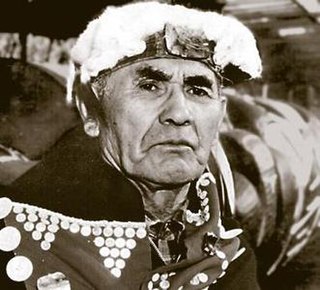
Chief Mungo Martin or Nakapenkem, Datsa, was an important figure in Northwest Coast style art, specifically that of the Kwakwaka'wakw Aboriginal people who live in the area of British Columbia and Vancouver Island. He was a major contributor to Kwakwaka'wakw art, especially in the realm of wood sculpture and painting. He was also known as a singer and songwriter.

Haida argillite carvings are a sculptural tradition among the Haida indigenous nation of the Northwest Coast of North America. It first became a widespread art form in the early 19th century, and continues today.

The visual arts of the Indigenous peoples of the Americas encompasses the visual artistic practices of the Indigenous peoples of the Americas from ancient times to the present. These include works from South America and North America, which includes Central America and Greenland. The Siberian Yupiit, who have great cultural overlap with Native Alaskan Yupiit, are also included.

A walking stick or walking cane is a device used primarily to aid walking, provide postural stability or support, or assist in maintaining a good posture. Some designs also serve as a fashion accessory, or are used for self-defense.

The visual art of Botswana has varied among the different ethnic groups and throughout history. Historically it has fallen into two main categories: that of the San peoples and that of the Bantu-derived peoples such as the Batswana...
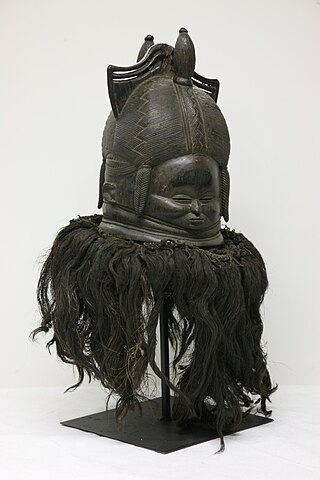
Art in Sierra Leone has a long and significant tradition of carving and ceremonial works like masks and cloth for initiation and protection. Although art styles are oftentimes ascribed to a single ethnic group, the styles and processes are spread throughout the country and many artists move between the different ethnic groups in the country.

Igbo Landing is a historic site at Dunbar Creek on St. Simons Island, Glynn County, Georgia. It was the setting of a mass suicide in 1803 by captive Igbo people who had taken control of their slave ship and refused to submit to slavery in the United States. The event's moral value as a story of resistance towards slavery has symbolic importance in African American folklore as the flying Africans legend, and in literary history.
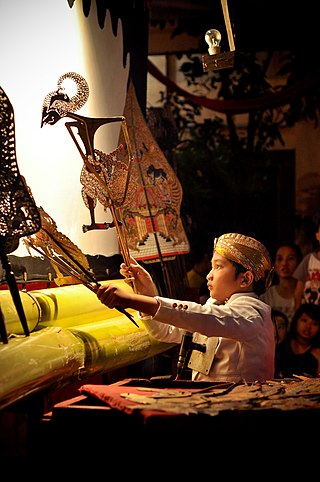
Wayang kulit is a traditional form of puppet-shadow play originally found in the cultures of Java and Bali in Indonesia. In a wayang kulit performance, the puppet figures are rear-projected on a taut linen screen with a coconut-oil light. The dalang manipulates carved leather figures between the lamp and the screen to bring the shadows to life. The narratives of wayang kulit often have to do with the major theme of good vs. evil.
Ulysses Davis was an African-American barber and self-taught sculptor. Davis is best known for his carvings of historical figures such as a set of mahogany busts of all the presidents and similar portrait heads of the Rev. Dr. Martin Luther King Jr., the Kennedys and other leaders from the civil rights era.
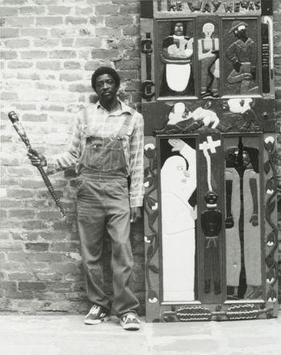
Herbert Singleton (1945–2007) was an American bas-relief sculptor and painter based in New Orleans, Louisiana. His work documented the tribulations of life in the Algiers neighborhood of New Orleans.
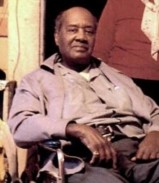
Luster Willis (1913–1991) was an African-American artist from Terry, Mississippi best known for his painting and illustrations. He employed diverse painting styles and collage to draw attention to the shortcomings of mass media.
References
- 1 2 3 Granger, Mary (1940). Drums and Shadows: Survival Studies Among the Georgia Coastal Negroes.
- 1 2 Vlach, John Michael (1978). The Afro-American Tradition . Cleveland, OH: Cleveland Museum of Art. pp. 27. ISBN 0-910386-39-0.